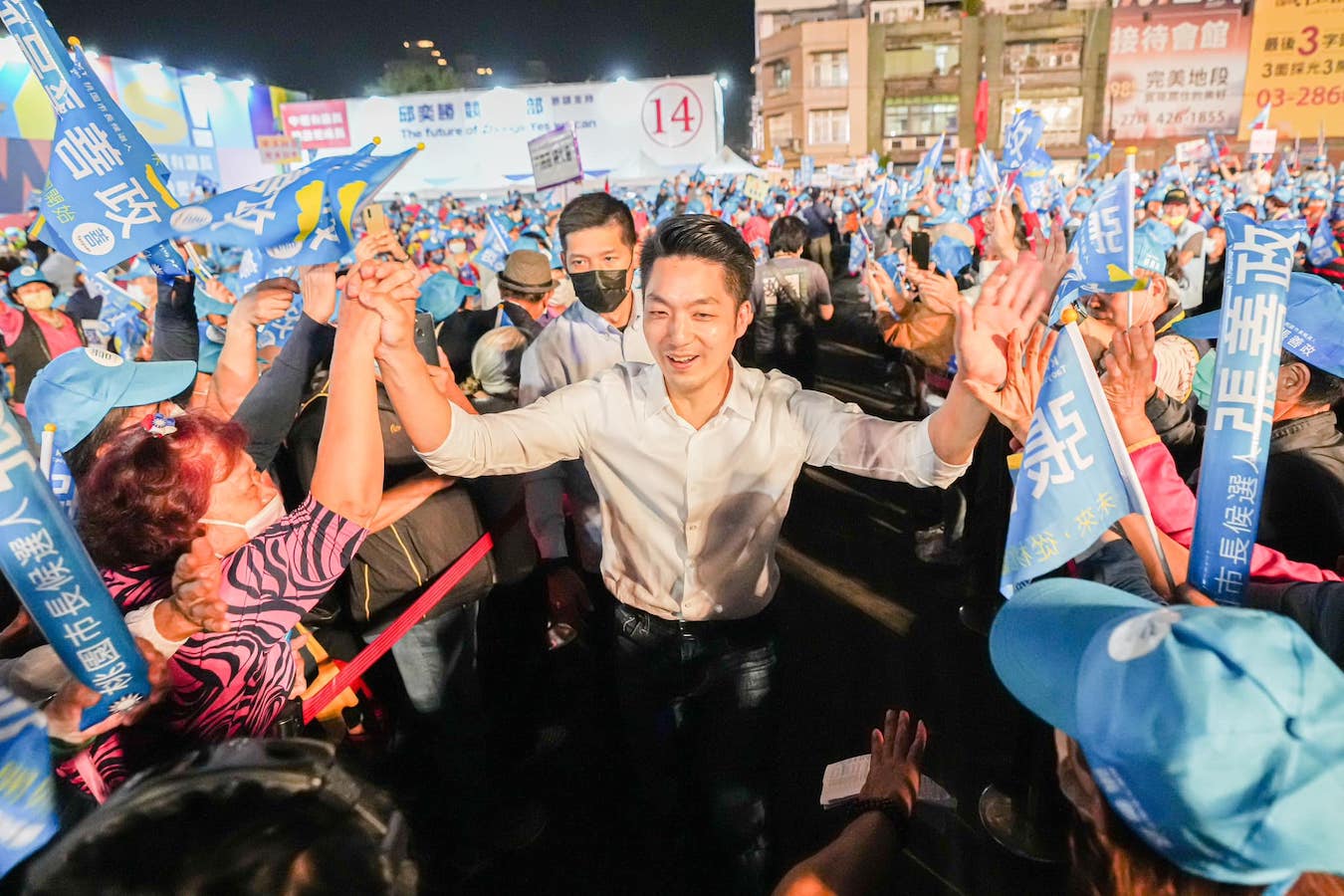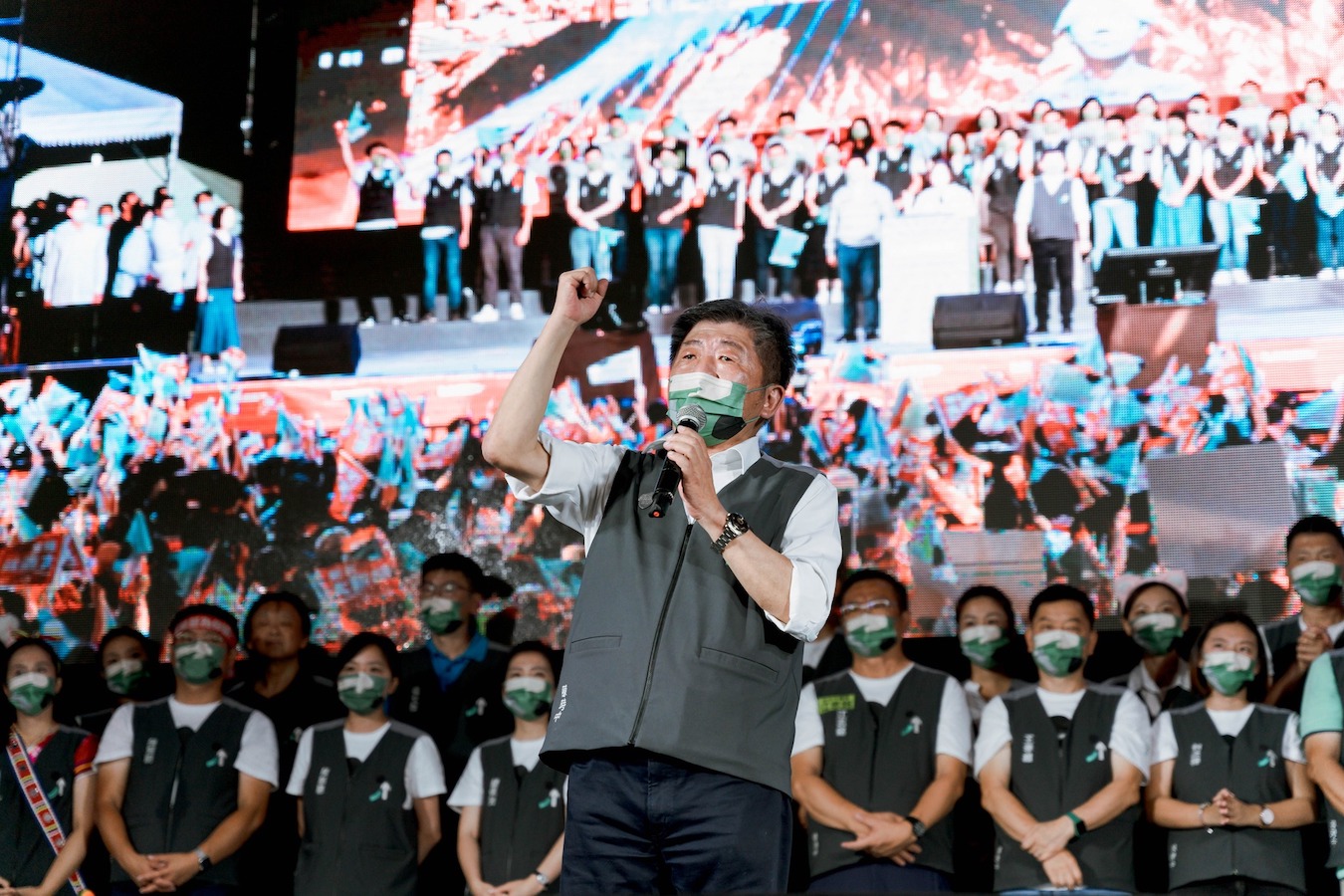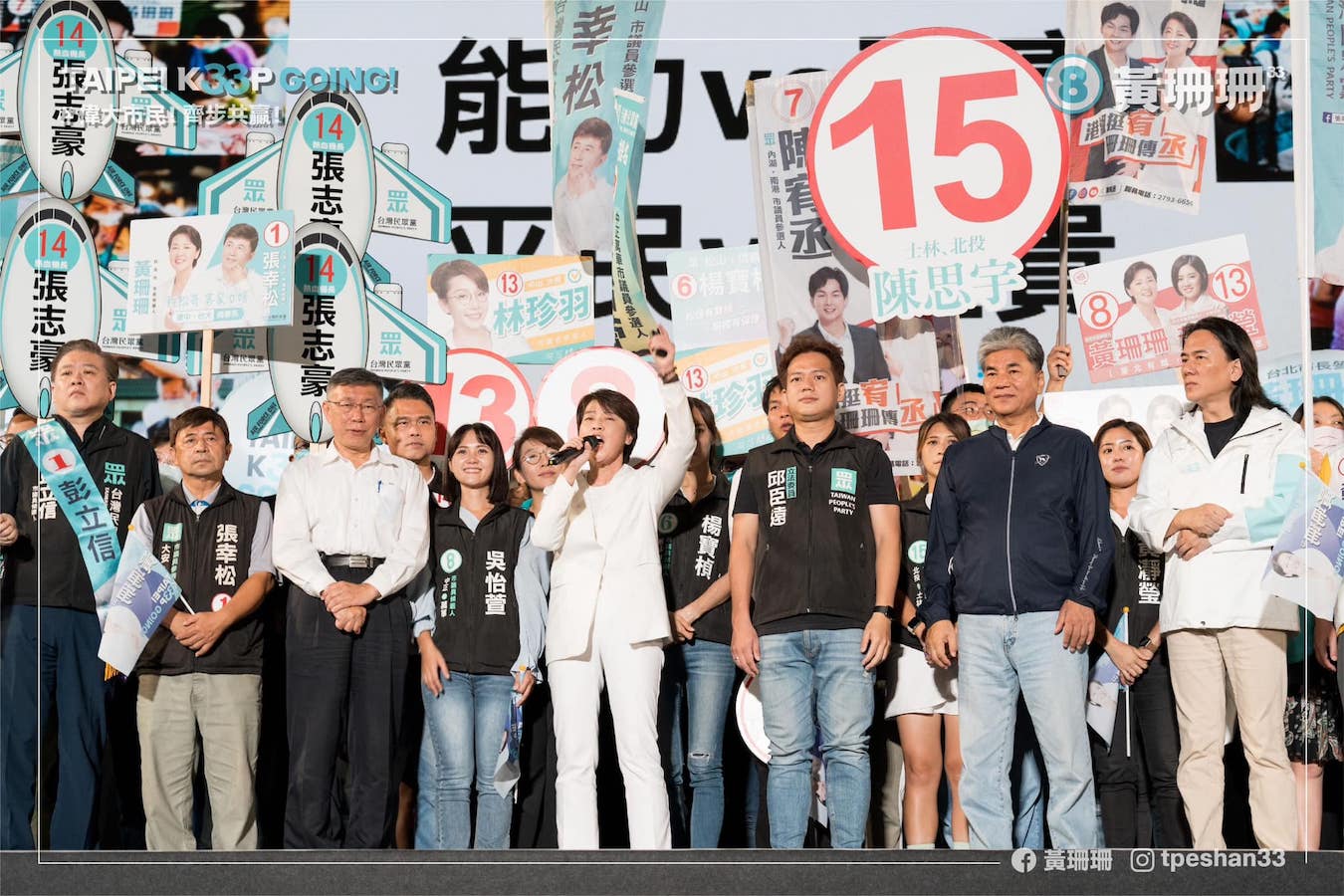by Brian Hioe
語言:
English
Photo Credit: 毛貓大少爺/Flickr/CC BY-SA 2.0
WITH THE UPCOMING midterm elections in Taiwan, much coverage–both domestic and international–has focused on the Taipei mayoral race.
In particular, the Taipei mayoral race features a three-way match-up between former legislator Chiang Wan-an of the KMT, former Minister of Health and Welfare Chen Shih-chung of the DPP, and former deputy mayor Huang Shan-shan of the TPP. The three candidates all resigned from their positions in order to run.
The race has attracted a great deal of attention because of the candidates’ backgrounds. Chen Shih-chung headed Taiwan’s response to COVID-19 as Minister of Health and Welfare and head of the Central Epidemic Command Center, the government body that handles Taiwan’s response to pandemics. Chen held daily press conferences through the course of the COVID-19 pandemic to provide updates on the COVID-19 situation. Consequently, he is credited with much of Taiwan’s successes fighting COVID-19–or, for detractors, he is seen as responsible for the shortcomings of Taiwan’s COVID-19 response under the Tsai administration.
 Chiang Wan-an of the KMT. Photo credit: Chiang Wan-an/Facebook
Chiang Wan-an of the KMT. Photo credit: Chiang Wan-an/Facebook
Likewise, Chiang Wan-an was one of the KMT’s better-known and youngest legislators. He is the youngest of the three candidates, at age 43. However, what has drawn the most attention about Chiang is with regard to his family background. Chiang is the apparent great-grandson of former dictator Chiang Kai-shek, though some have raised questions about the veracity of this claim. Chiang was originally surnamed Chang, but he and his father John Chiang changed their last name in order to seek public office.
Lastly, Huang Shan-shan is running as the candidate of Ko Wen-je’s TPP, though she is actually a member of the People First Party. Huang’s success or lack of success in challenging both Chiang and Chen will prove an important test for the “light blue” third party. Namely, though a pan-Blue party, the TPP has distinguished itself from the KMT by taking less hardline positions on Taiwan’s sovereignty. This may create a political opening for the TPP, seeing as the biggest difficulty that the KMT has faced in past years is its inability to turn around its pro-China image, but the TPP has significantly less resources and mobilization capacity than the KMT.
It may not be surprising, then, that the Taipei mayoral race sees disproportionate attention. Taipei is Taiwan’s capital, as well as its political, economic, and cultural center. Consequently, the Taipei mayoral race often sets the tone for other races nationwide. There is also the historical precedent of Taipei mayors later becoming presidents, as is the case with three of Taiwan’s four democratically elected presidents–Tsai Ing-wen being the major example notwithstanding.
 Chen Shih-chung of the DPP. Photo credit: Chen Shih-chung/Facebook
Chen Shih-chung of the DPP. Photo credit: Chen Shih-chung/Facebook
At the same time, it is important to note–particularly for international media–that the Taipei mayoral race is not indicative of broader trends in Taiwan, overall. Because it is the Taiwanese city that has the most international recognition, the outcome of the Taipei race is likely to be reported on as though it were a marker of broader views of the pan-Green and pan-Blue camps in Taiwan.
This would be to ignore the large disparities between Taipei and other parts of Taiwan, however. Taipei has historically swung toward the pan-Blue camp, as a city with a large population of waishengren–individuals descended from those that came with the KMT to Taiwan. Waishengren comprise around 10% of the population, in addition to the 2% Indigenous and 88% benshengren population, the latter of which are Han individuals descended from prior waves of migration to Taiwan in the past centuries. Likewise, Taipei served as the KMT’s seat of power during the authoritarian period.
It is significant to note the significant demographic differences between Taipei and other parts of Taiwan before seeing the Taipei race as a benchmark for Taiwan as a whole. Taipei is the city in Taiwan that speaks the least Taiwanese Hokkien, after all, which is much more widely spoken outside of Taipei. Taipei residents have also often been regarded as a minority of elites–the term “celestial dragon people” (天龍人) is sometimes used to refer to Taipei residents. The term comes from the Japanese manga One Piece, in which the “celestial dragons” are a race of nobles that wear space suits when venturing outside of their homes in order to avoid breathing the same air as the common masses. As the joke goes, residents of Taipei more often travel to other countries than they do to other parts of Taiwan.
 Huang Shan-shan of the TPP speaking at a rally. Photo credit: Huang Shan-shan/Facebook
Huang Shan-shan of the TPP speaking at a rally. Photo credit: Huang Shan-shan/Facebook
Taipei fits the classic pattern of a capital city that drains resources from the rest of the country and is demographically very different from the country that it rules over. But consequently, it is necessary to examine the overall picture of election outcomes in Taiwan, rather than see dynamics in Taipei as reflective of Taiwan overall. That would be to repeat a longstanding issue of international media coverage of Taiwan that has excluded perspectives from outside of Taipei.
This Taipei-centrism proved to be something that historically allowed the KMT to monopolize the narrative about Taiwan in order to justify its authoritarian rule, covering up resistance against its rule from outside of Taipei because of the disproportionate international focus on Taipei and failure to be attentive to other places in Taiwan. Indeed, particularly if a pan-Blue party wins the Taipei mayoral race, this hardly means that Taiwan is tilting back toward the pan-Blue camp–rather, this would simply be the longstanding status quo in Taipei reasserting itself–which is not at all what the outlook is for Taiwan as a whole.

